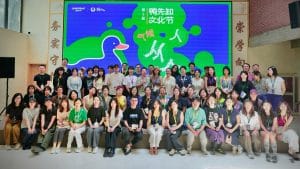A new NGO guide on Chinese-built dams around the world
Embargo: no coverage before November 26, 2012
Chinese dam builders have come to dominate the world market. Civil society groups have documented serious social and environmental impacts with numerous Chinese dams in Africa, Asia and Latin America. A new guide published by International Rivers explains how NGOs can influence Chinese dam builders and advocate for social and environmental interests.
In the past 10 years, Chinese companies and financiers have rapidly rolled up the global dam building market. Chinese companies and financiers are involved in more than 300 overseas dam projects, and Sinohydro, a Chinese state-owned enterprise, has become the world’s biggest hydropower company. Although they have become global actors, Chinese dam builders don’t always follow international social and environmental standards. Chinese projects have provoked opposition in countries such as Burma, Cambodia, Ethiopia, Honduras, Malaysia and Sudan.
In recent years, civil society groups have found ways to engage with and influence the projects and policies of Chinese dam builders. After protests by local communities and NGOs, Chinese companies and financiers had to suspend projects in Burma and Gabon, and withdrew from operations in Cambodia. Sinohydro is engaged in a dialogue with Chinese and international NGOs, and has prepared an environmental policy that puts it at the forefront of the international hydropower industry. Chinese government agencies have also issued guidelines for foreign investors to protect the environment and respect local communities in their host countries.
A new guide published by International Rivers presents the lessons of past experience and informs interested NGOs how they can best influence the projects and policies of Chinese dam builders and advocate for social and environmental interests. The report provides an overview of the relevant actors, laws and standards in the Chinese dam building sector, including Sinohydro’s new environmental policy. It presents case studies of how NGOs have influenced Chinese overseas projects, and concludes with a list of addresses and other useful information.
Entitled “The New Great Walls”, the 60-page report is available at www.internationalrivers.org/node/3962. Translations into Chinese and Spanish are planned for early 2013. Please contact Katy Yan at International Rivers (katy@internationalrivers.org) if you would like to organize a civil society training with the new guide, or suggest translations into other languages.
Contact for further information: Katy Yan, katy@internationalrivers.org, and Grace Mang, grace@internationalrivers.org



